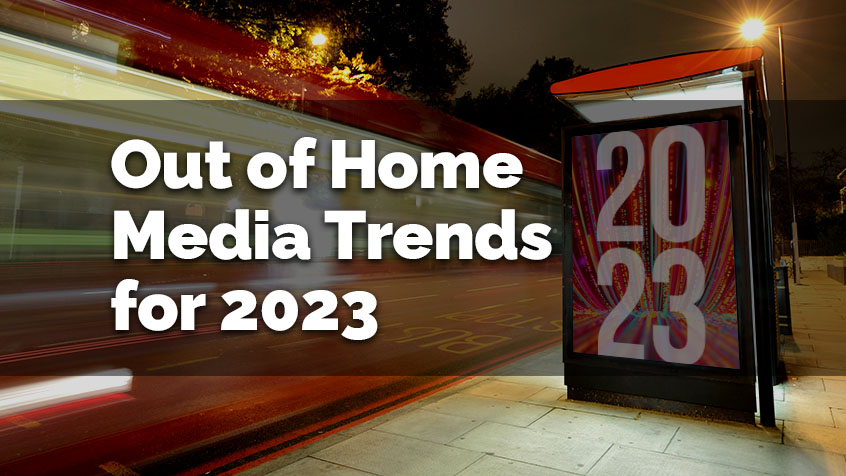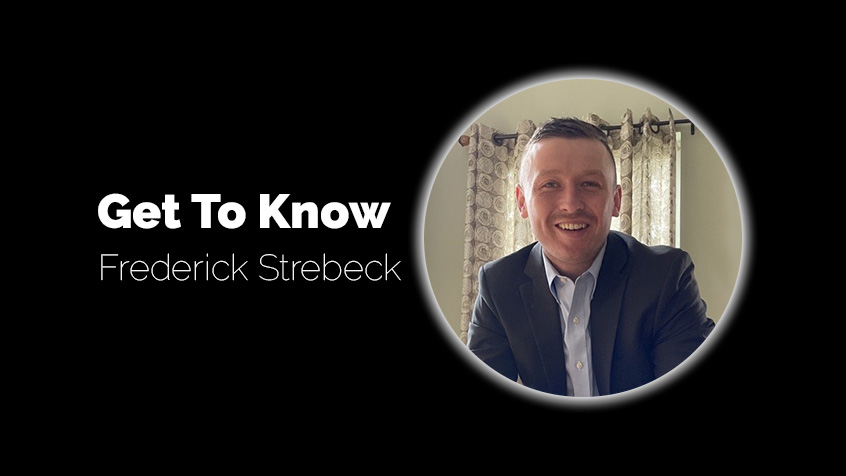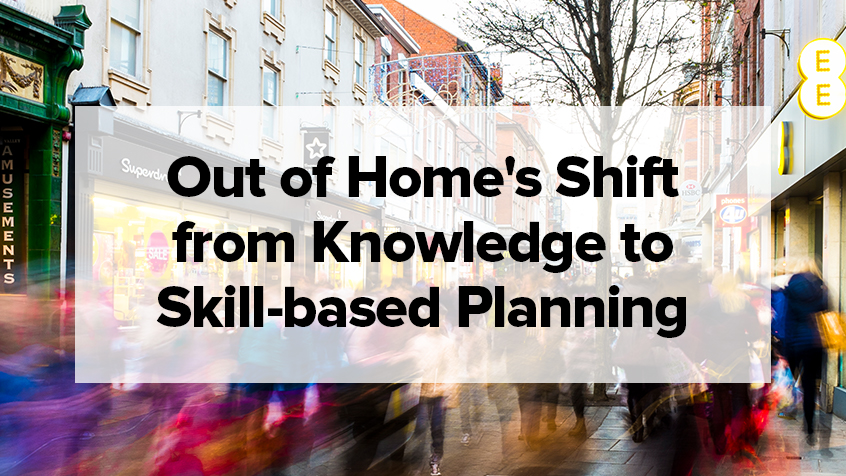It’s time to take a look ahead at the Out of Home media trends we see lining up in 2023. Last year was a year of recovery for Out of Home media. As the world began to fully come out of the social and economic shadow of the pandemic, confidence in Out of Home media came back, and so did the advertisers. The industry saw historic growth in 2022, granted that was over historic lows in the previous years, but in the big picture, it meant that OOH was on the fast track back to normal.
And while the previous years were difficult, the Out of Home industry didn’t sit idle, twiddling its thumbs and crying, “woe is me”. During the pandemic, the industry worked diligently to improve itself on every front. From planning data to programmatic platforms to campaign measurement and attribution, the industry made progress across the board.
Now we are in a position to see those improvements and advancements come to true fruition. Rather than just a headline-catching buzzword, programmatic OOH is becoming a more standard part of media planning. New ad tech and attribution providers will continue to ramp up their capabilities and refine their measurements to provide more accurate, more specific, and more relevant data to advertisers.
The big Out of Home media trends this year are less about innovation or new technology and more about the refinement, adoption, and strategic use of the last few years’ advancements.
Out of Home Media Trend #1: Programmatic Out of Home will continue to become mainstream:
Programmatic DOOH has been at the top of everyone’s Out of Home media trend list for the last few years, and with good reason. While it still only accounts for a relatively modest portion of all OOH media buying, it is growing at a steady rate, and as more Out of Home media converts to digital formats, that will continue. There are still refinements to be worked out, but a large part of connecting the pipes is done, and the mechanics for pDOOH are now fairly well established.
The important trend that we see is less about the technology and platforms and more about the understanding and adoption of programmatic DOOH by advertisers. For the last few years, advertisers have been showing interest in the channel but were not quite ready to step in. Now, with continuing education, advertisers are finally seeing how pDOOH can fit into their marketing plan, work with, and complement other media, including traditional static OOH.
As advertisers become savvier with the understanding of the benefits that the strategic application of pDOOH can bring, we expect to see it become a standard part of the marketer’s media toolkit. Expect them to begin to look at pDOOH as less of a novelty and more as a standard part of any integrated media plan.

Out of Home Media Trend #2: Data Privacy Concerns Will Make Out of Home Even More Important:
With growing consumer concerns around data privacy, along with all the “will they/won’t they” uncertainty around cookies the ability to access targeting data is becoming more and more important. As third-party data becomes less accurate, desirable, and possibly even less available, it is imperative for brands to look to new sources. This will make first-party and zero-party data a critical asset.
Zero-party data in particular, will be invaluable to brands for their targeting purposes, and while the focus is certainly on using it for digital targeting, it can also be leveraged for OOH targeting as well. By finding new ways to use location information from their in-house data sources, brands will be able to create geo-targeted audiences from their own customers and extrapolate look-alike audiences from that.
For Out of Home media trends, this means that planning and targeting platforms should be looking at facilitating the easy ingestion of advertisers’ proprietary data into their planning frameworks. Data is only as valuable as the insights that can be gleaned from it, so it will be imperative for the industry to make it as easy as possible for advertisers to make the most of the assets they have available.
This also underscores the importance of having a universally accepted base layer of measurement, as laid out in Geopath’s recent revisioning. For advertisers to be able to apply their own audience segments, there must first be a common, fundamental measurement for Out of Home that can be used across any platform or in conjunction with other data to add insights.
Out of Home Media Trend #3: Advertisers Will Turn Back to Out of Home for Brand Awareness:
Fair to say, it’s been a tough couple of years, and with the uncertainty of a possible economic recession and numerous global political & social crises, people are feeling worn down and nervous. In times like these, consumers turn to what is familiar and comfortable to provide a sense of stability that may be lacking elsewhere in their lives. Brands will need to keep this in mind when it comes to both creative and media selection.
Recent surveys suggest that brands are indeed looking at shifting their budget toward brand building and awareness away from performance marketing in the coming year. In fact 31% say they will be rebalancing their budget toward branding in 2023.
Out of Home has always excelled at providing brand awareness cost-effectively and at scale, and that hasn’t changed. In challenging times brands will turn to a trusted, tested media channel to provide support.

Out of Home Media Trend #4: Advertisers Will Tap Into Out of Homes Brand Safe Environment in the Face of Digital Uncertainty:
Part of maintaining that comfort level and positive brand reputation also includes paying close attention to brand safety – it’s easy to damage a brand’s reputation, and can be difficult, time-consuming, and expensive to get it back. All of which affect the bottom line.
You may not have noticed, but there has been some… upheaval…in social media over the last few months. With the chaos at Twitter and the looming possibility of TikTok being banned, social media is struggling, and consumer views are changing. As an example, 65% of US adults have a negative view of brands that advertise on social platforms that contain what they see as objectionable content. Consumers will judge a brand by the company they keep.
With Out of Home, advertisers have a brand-safe environment where the creative stands alone (or almost so) away from potentially objectionable content while also projecting a sense of stability and permanence, and security that will appeal to consumers.
Changing the Way We Think About Out of Home:
Albert Einstein once said, “The world as we have created it is a process of our thinking. It cannot be changed without changing our thinking.”
For the Out of Home industry, from media suppliers to agencies, to advertisers, it is time to change our thinking. There have been tremendous advancements made in the technical, logistical, and data portions of our industry over the last few years. Now is the time to put them into practice, and that means changing our way of thinking.
The most important Out of Home media trend for this year, is that we must change the way we think about every aspect of Out of Home planning and implementation, whether it is staying on top of the latest data for targeting, learning the most effective way to include programmatic in our plans, or making sure we have the correct attribution techniques set up that will relate back to key objectives.
That doesn’t, however, mean throwing away everything that is old – Out of Home’s ability to be a powerful brand awareness tool has not gone away, it has simply been enhanced to be better at hyper-local, data-driven targeting. It’s not as simple as an either/or question. The challenge is to change our thinking to employ both when necessary.
Out of Home is a vast, vibrant, and constantly changing media channel that has made great strides through some difficult times. Now it is time for us to face the biggest challenge – ourselves. How we, as OOH professionals and marketers, take advantage of these changes over the next few years will greatly influence the future of the industry.





